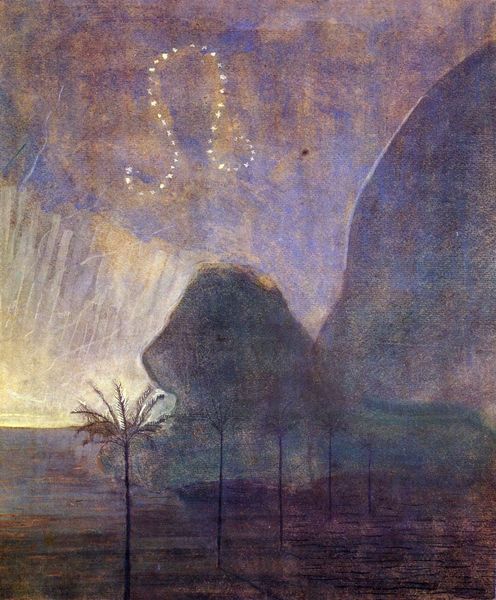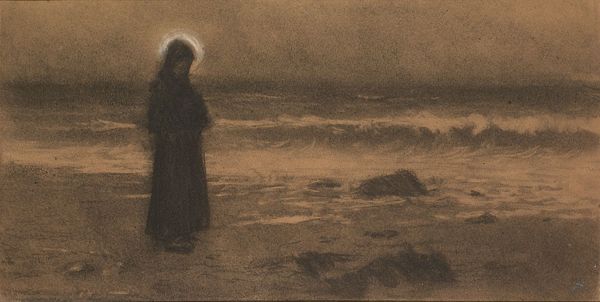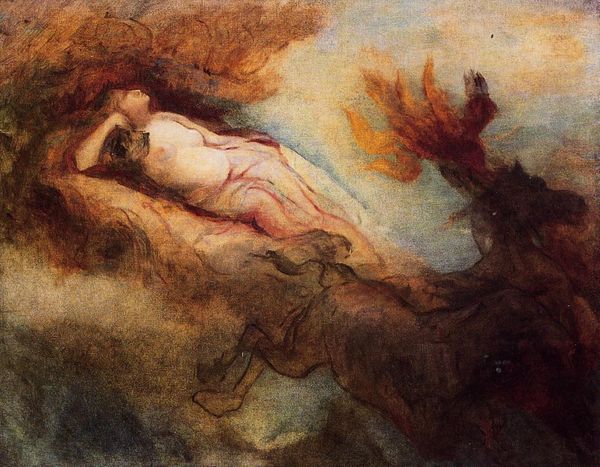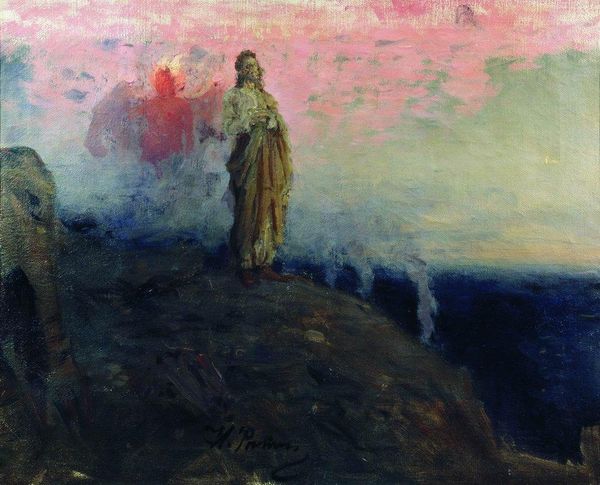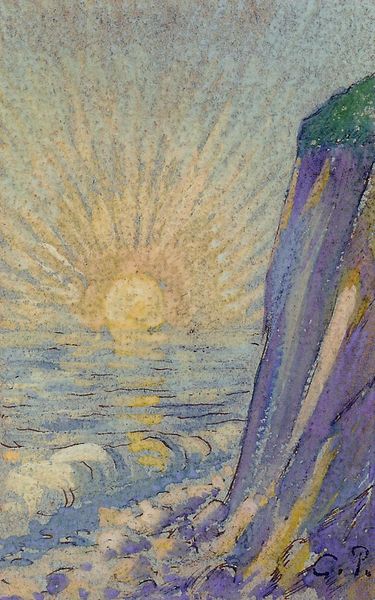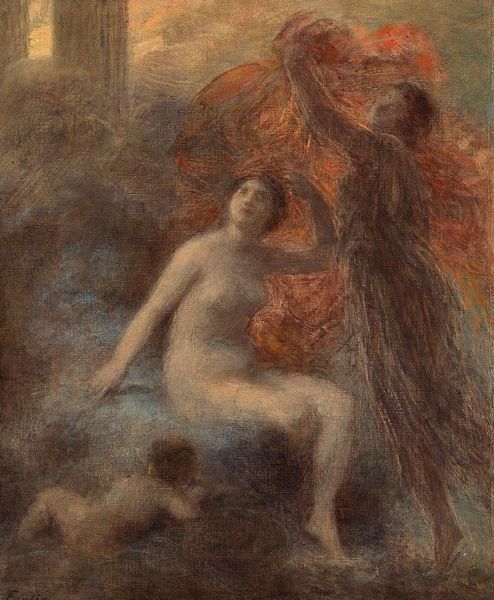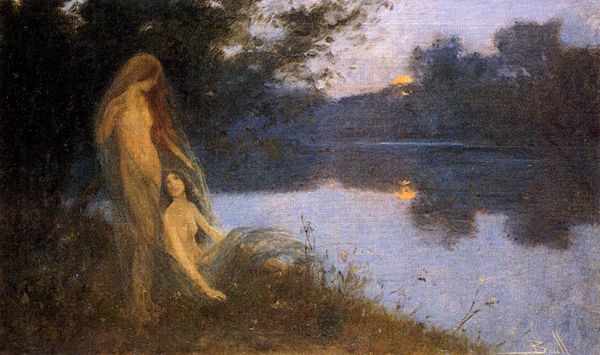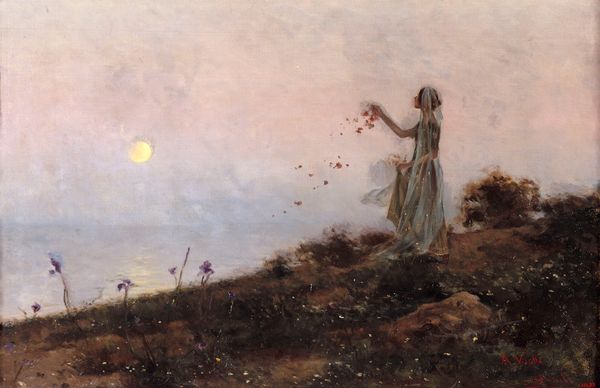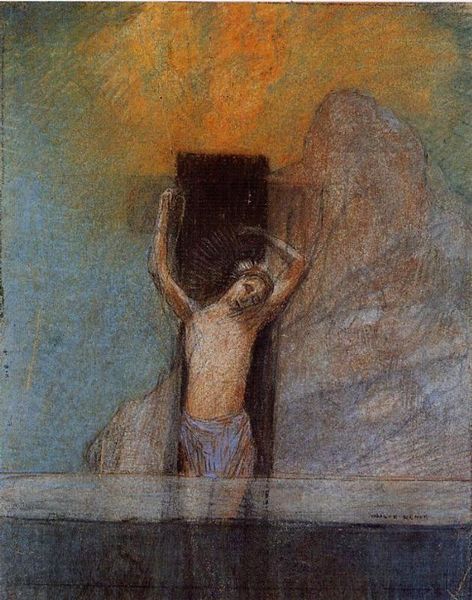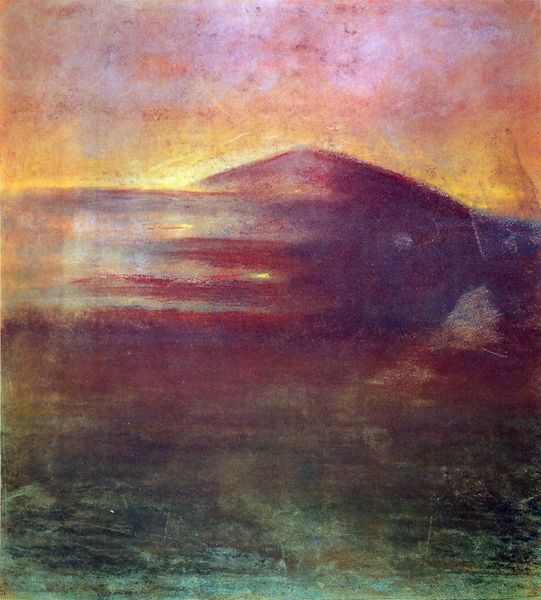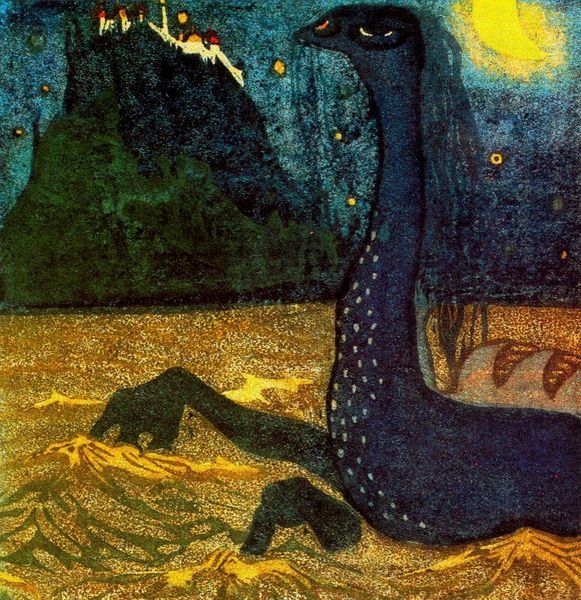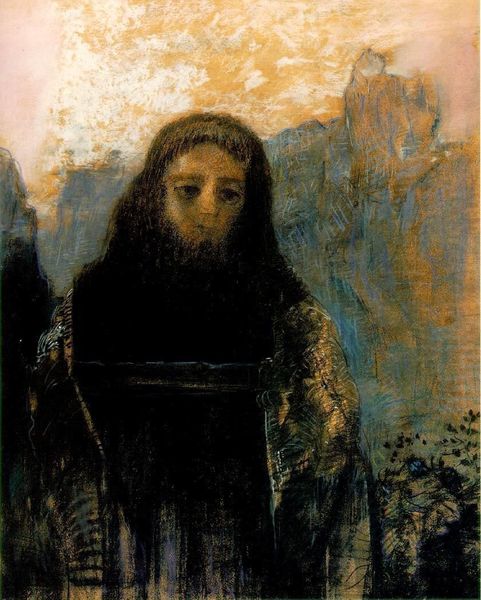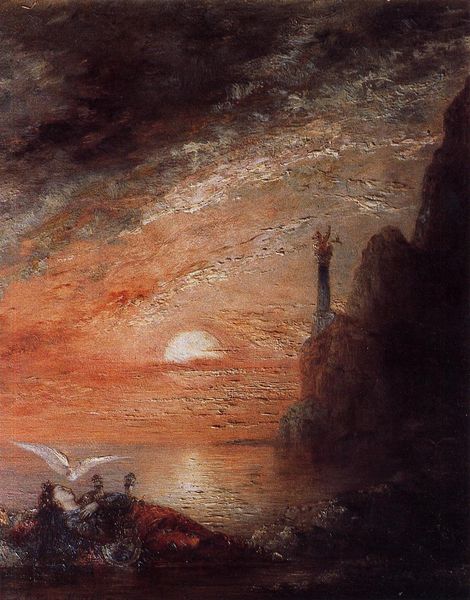
painting, pastel
#
tree
#
sky
#
abstract painting
#
painting
#
landscape
#
figuration
#
form
#
water
#
symbolism
#
pastel
Copyright: Public domain
Editor: We're looking at Odilon Redon's pastel and oil artwork "Reflection." I find its ambiguous form so compelling and dreamlike. How do you interpret this work, and perhaps situate it within its historical context? Curator: Redon emerged during a period defined by significant social and political upheaval. His symbolism can be viewed as a rejection of industrial progress, with artists finding refuge in inner worlds and the mystical. Look at the figure - are we meant to understand a person here or perhaps an allegory? And, how does its somber depiction resonate with its late nineteenth-century audience grappling with societal changes? Editor: That's fascinating. So, the artwork could be read as a visual commentary on society's shifting values? Is that typical of the Symbolist movement? Curator: Precisely. Many symbolist works directly engage with, or react to, institutional power, industrialization, and shifting socio-economic norms. Consider also the art market: the popularity of more abstract and evocative imagery arose partly because of a growing middle-class viewership searching for meaning. Editor: The commercial aspect is something that is very relevant, isn't it? It makes me think of today's creative industry. I did not appreciate how complex the motivations are of artists such as Redon! Curator: Exactly. And by delving into this artwork’s historical underpinnings, we gain a much more complex appreciation. It also asks a key question: can the reception of this kind of art ever escape being affected by the establishment? Editor: That's quite the question. It offers a wider perspective on symbolism beyond its aesthetic qualities. Curator: Indeed. By questioning the public role of art, "Reflection" mirrors both an era of transformation and, I think, the nature of how imagery circulates within society today.
Comments
No comments
Be the first to comment and join the conversation on the ultimate creative platform.
